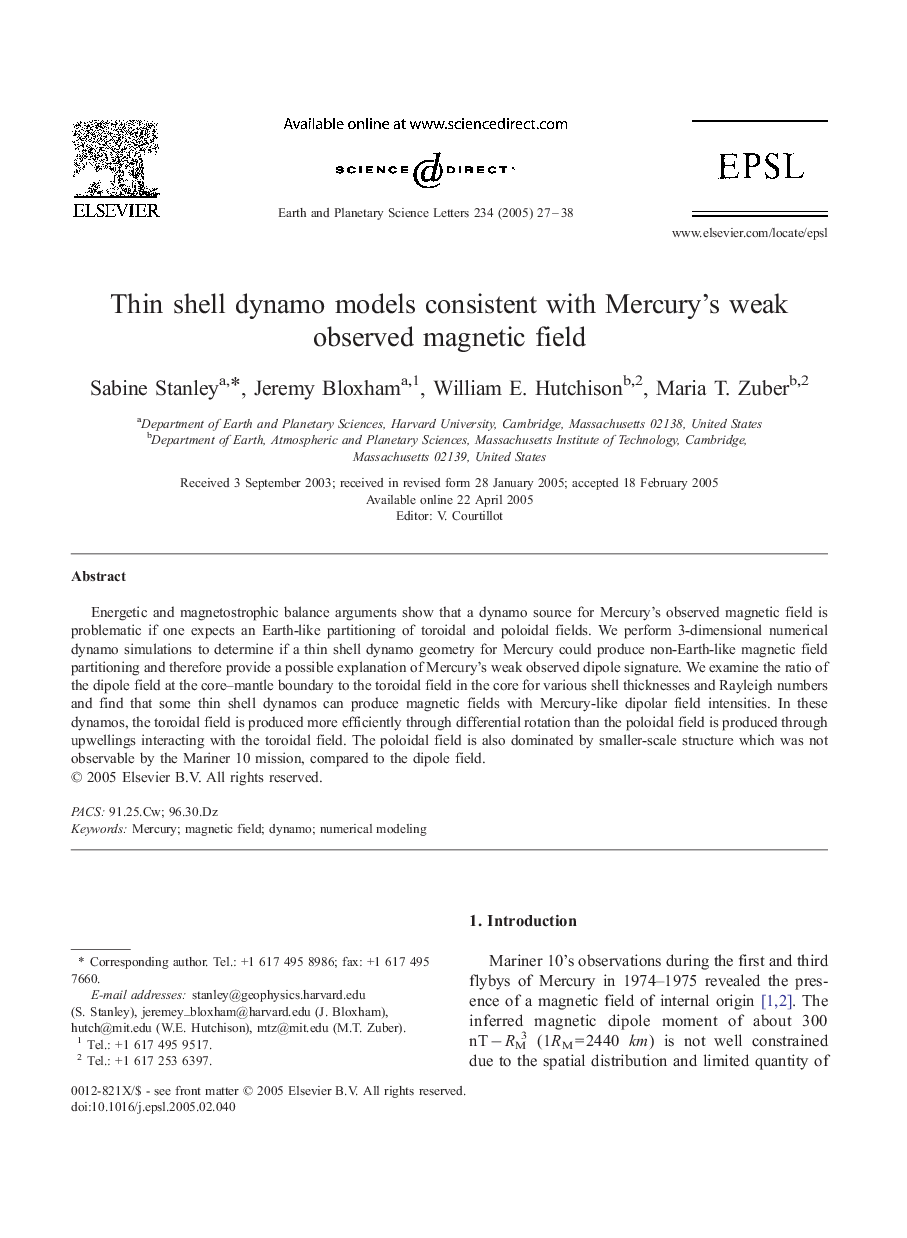| Article ID | Journal | Published Year | Pages | File Type |
|---|---|---|---|---|
| 9522261 | Earth and Planetary Science Letters | 2005 | 12 Pages |
Abstract
Energetic and magnetostrophic balance arguments show that a dynamo source for Mercury's observed magnetic field is problematic if one expects an Earth-like partitioning of toroidal and poloidal fields. We perform 3-dimensional numerical dynamo simulations to determine if a thin shell dynamo geometry for Mercury could produce non-Earth-like magnetic field partitioning and therefore provide a possible explanation of Mercury's weak observed dipole signature. We examine the ratio of the dipole field at the core-mantle boundary to the toroidal field in the core for various shell thicknesses and Rayleigh numbers and find that some thin shell dynamos can produce magnetic fields with Mercury-like dipolar field intensities. In these dynamos, the toroidal field is produced more efficiently through differential rotation than the poloidal field is produced through upwellings interacting with the toroidal field. The poloidal field is also dominated by smaller-scale structure which was not observable by the Mariner 10 mission, compared to the dipole field.
Related Topics
Physical Sciences and Engineering
Earth and Planetary Sciences
Earth and Planetary Sciences (General)
Authors
Sabine Stanley, Jeremy Bloxham, William E. Hutchison, Maria T. Zuber,
